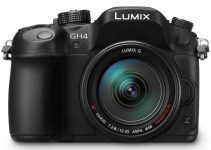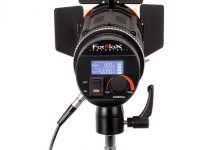Replacing an actor with someone else is a really cool trick if you can pull it off. You can do it to create some fun scenes or shots that you couldn’t have dreamed of actually pulling off yourself.
It can also be a useful idea for your own story, think about how Quentin Tarantino put Rick Dalton (Leonardo DiCaprio) into a classic movie in “Once Upon a Time in Hollywood”. Also, it can help with smoothing out shots with body doubles or where the original actor couldn’t be on location.
If you ever needed more convincing that filmmaking is more accessible than ever, actor replacement is totally possible using Adobe After Effects. Steve Ramsden of Unexplored Films demonstrates the technique to help anyone create the effect themselves.
The process is a bit more involved than your average effect, as it requires special care and attention during shooting and editing to get the best possible image. Essentially, what needs to happen is you need to remove the original actor from the scene to create a clean background, shoot a new performance on a green screen, and then drop the new actor into the scene.
In picking shots for the demo, Ramsden tried to find scenes where there were a couple actors interacting and where they were shot on a tripod. It’s not that you can’t do the replacement with a handheld shot, but it does make things a lot harder.
To start, Ramsden went with the same scene in ”The Great Escape” that Rick Dalton dropped into. And, the first step is getting a clean background. What Ramsden does is what the clip and take screen grabs as the actor moves around. This is because every time they move they reveal a different part of the background, which we need for later.
One enough images are collected you can bring them into Photoshop. Here is where you can cut out the actor in each shot and then overlay them on top of one another. It’s still possible you’ll have a section that was never revealed, but hopefully it’s small enough that a little clone stamp action can take care of it.
Doing this work up front provides a better working preview. Another thing to consider is cutting out any foreground elements. You’ll need this to sit in front of your new shots, so taking the time to prepare it now will help you in the future.
Drop the new background over the top of your original scene in After Effects. Anything you need to stay in the frame you’ll need to mask and track, especially if they are going to overlap with your new actor.
To ensure the background moves correctly with any camera movements you’ll want to add a tracking marker and then create a null object with it. Attach your still background to it and it should match up well with the scene.
Now for filming. It’s going to be green screen and best practice is to have a lot of space between your actor and the background while making sure you have very even lighting on the background. Then, Ramsden had a key light with a couple smaller lights as fill and backlights.
Positioning the camera and lights is the next trick. You’ll have to closely examine the scene, checking things like how high the camera is in relation to the actor, an estimate of the focal length, how the highlights bounce off the actor, how contrasty the light is, and even how to match the eye line.
For the performance you’ll need to make sure timing matches up. In this case Ramsden just played the clip in the background planning to re-record the audio later on. A couple scenes had props or seating and having your own bench and props will help the performance match up.
After you record your clips, take the clips and lay them over the originals. He matched them up either by the audio or by turning the opacity down. That shouldn’t be too hard.
Then he uses Keylight to mask out the green screen. Once that is done you can draw a rough mask around the new actor. Adjust scaling and placement to cover the original actor.
One of the most important things to selling the effect is the color grading. Getting it to match up can require a bit of guess and check. Ramsden tries to go after matching the highlights and then the shadows to make it look good.
Then, you might want to consider the age and quality of the original footage. Adding some grain or film damage effects can help it blend in even more.
Finally, the next step is creating the audio. It’s possible you just recorded this when you shot the new footage, but if you didn’t and need to re-record there are some things you can do.
First, if you can match the location when you record that can help a lot. Record the audio outside if the original scene is outside, for example. Then, you may want to add a bit of EQ or other audio effects to match the original’s feel, much like how you might add grain or soften footage to match an older shot.
All things considered, it’s a fairly simple method for creating the effect. Each part might require a bit of work, but it’s not something out of reach of your average filmmaker or even students and others who just want to have some fun. Might be an experiment to put on your radar for the next rainy day.
Did you think the effect is fairly convincing? Or is it a bit too much work?
[source: Steve Ramsden – Unexplored Films]
Order Links:
Disclaimer: As an Amazon Associate partner and participant in B&H and Adorama Affiliate programmes, we earn a small comission from each purchase made through the affiliate links listed above at no additional cost to you.




